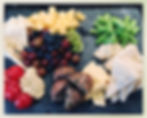- Ryan Hoffman
- Feb 1, 2019
- 3 min read

There are a few things in life I don't like skimping on. In fact there are 3 that really stand out. Things I will pay more than 2x for. Toilet Paper. Facial Tissue. Q-Tips. These are no-brainers. I will not listen to any arguments. Case closed!
If I had to extend my list to a 4th item, it would be cutlery. Also known as knives you use to cut food. If you've ever used a low-quality knife and you've tried doing some extensive amounts of cutting, slicing, or chopping. If you are using
German vs Japanese
I've only ever owned German-style knives (Wusthof), but have used a few Japanese brands such as Shun and Global
German - Rocking motion, Weight is distributed more towards handle, Best for lots of cutting.
Japanese - Chopping motion, Even weight distribution, Better for precision cutting.
The best way to find out what knife is right for you is by trying out a few. Stop in to a Williams-Sonoma and ask to try out some knives. They'll let you cut some produce right there in the store. At the end of the day, it's all in the feel. Some people like a heavier handle (German) but I've learned some women prefer the lighter weight knives (Japanese).
Since I own German knives, more specifically Wusthof Classic, below is by analysis of each of the knives I use and why each one has their own specific uses.
Wusthof Classic - The Essentials (Ranked 1-10 based on necessity)
#1. 8" Chef's Knife

Uses: The workhorse! This is my top recommendation if you are only going to get 1 knife. 90% of my cutting is done with this knife. Everything from cutting raw chicken for a soup to slicing the skin off a mango, it does it all!
#2. 3 1/2" Pairing Knife

Uses: Peeling fruit (ex: kiwi) or vegetables (ex: small potatoes). Cutting soft fruits like strawberries, bananas or grapes. I have this knife out a lot for the kids as I'm cutting things into small pieces.
#3. 5" Santoku Hollow Edge Knife

Uses: Great for cutting vegetables for a soup. Think carrots, celery, small onions, mushrooms. My wife likes this knife a lot because it's a little small than a traditional 8" Chef's/Cook's knife.
#4. 9" Double-Serrated Bread Knife

Uses: Well, the name of this knife kind of says it all. Perfect for a bread with a hard crust and soft inside like a baguette, or a sandwich bread where you don't want to smoosh the breadActually thinking of the knife gives me PTSD as it's the one knife that has giving me the worst cut on my finger. Super sharp! But that's a good thing as long as you are paying attention, right?
#5. 5" Serrated Utility Knife

Uses: This is a great knife for preparing a charcuterie board. It will cut your cheese's your fruits (fresh or dried) and even your meats. Very practical!
#6. 9" Hollow Carving Knife

Uses: Roasting a whole bird? This comes in handy when doing a whole chicken on the grill or Thanksgiving turkey. The hollow grooves on this knife allow for cutting through the crisp skin without it pulling or ripping.
#7. 8" Vegetable Knife

Uses: Perfect for cutting root vegetables or starchy vegetables. I talked myself into this knife because I was tired of vegetables sticking to my knife when I cut them. I use this primarily for squash, sweet potatoes, russet potatoes. Don't use this for cutting garlic I've learned as the small garlic pieces get stuck in the holes of the knife.
#8. 6" Utility Knife

Uses: I use this knife for cutting a whole roasted chicken into parts. I choose this knife over the others because it is sleek and shorter than the other knives. It gets into the crevices so as to not mutilate the chicken. It's all about the presentation, right?
#9. 5" Tomato Knife

Uses: Great for soft skin foods like tomatoes or soft cheeses. The big thing with using this on tomatoes is you won't get the squishing of the tomatoes makes the seeds and juices release.
#10. 5" Boning Knife

Uses: This is great for those of you who want to go to town on a whole fish or whole bird. There is something satisfying to breaking down a chicken into 8 parts instead of paying the extra money for the butcher to do it.







